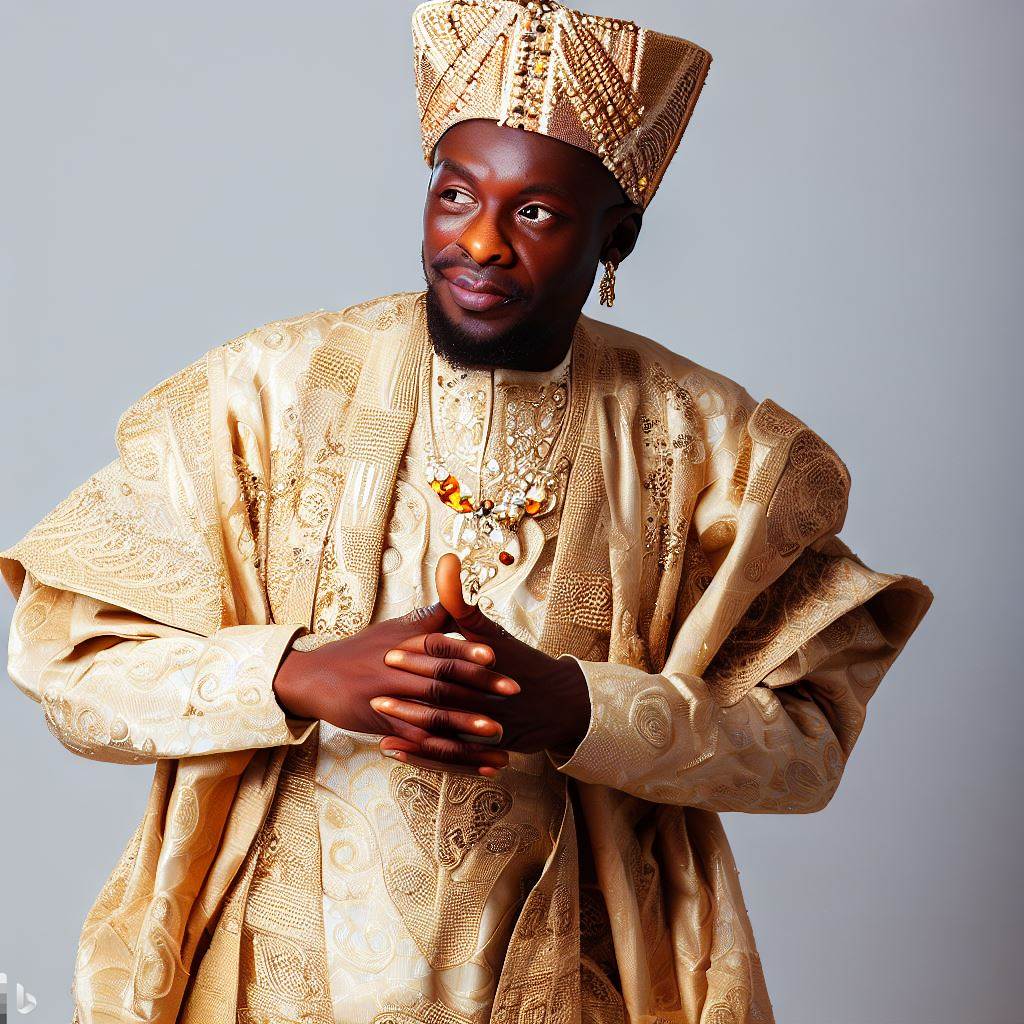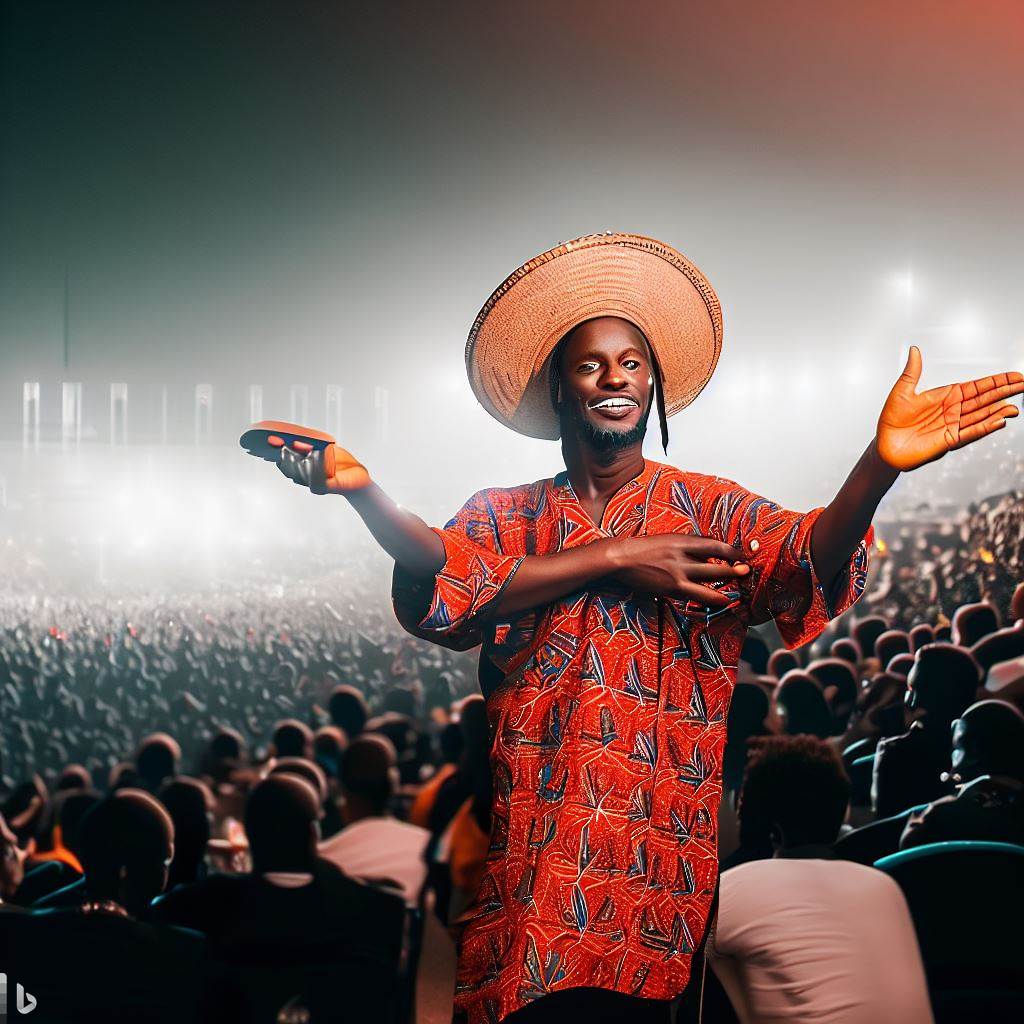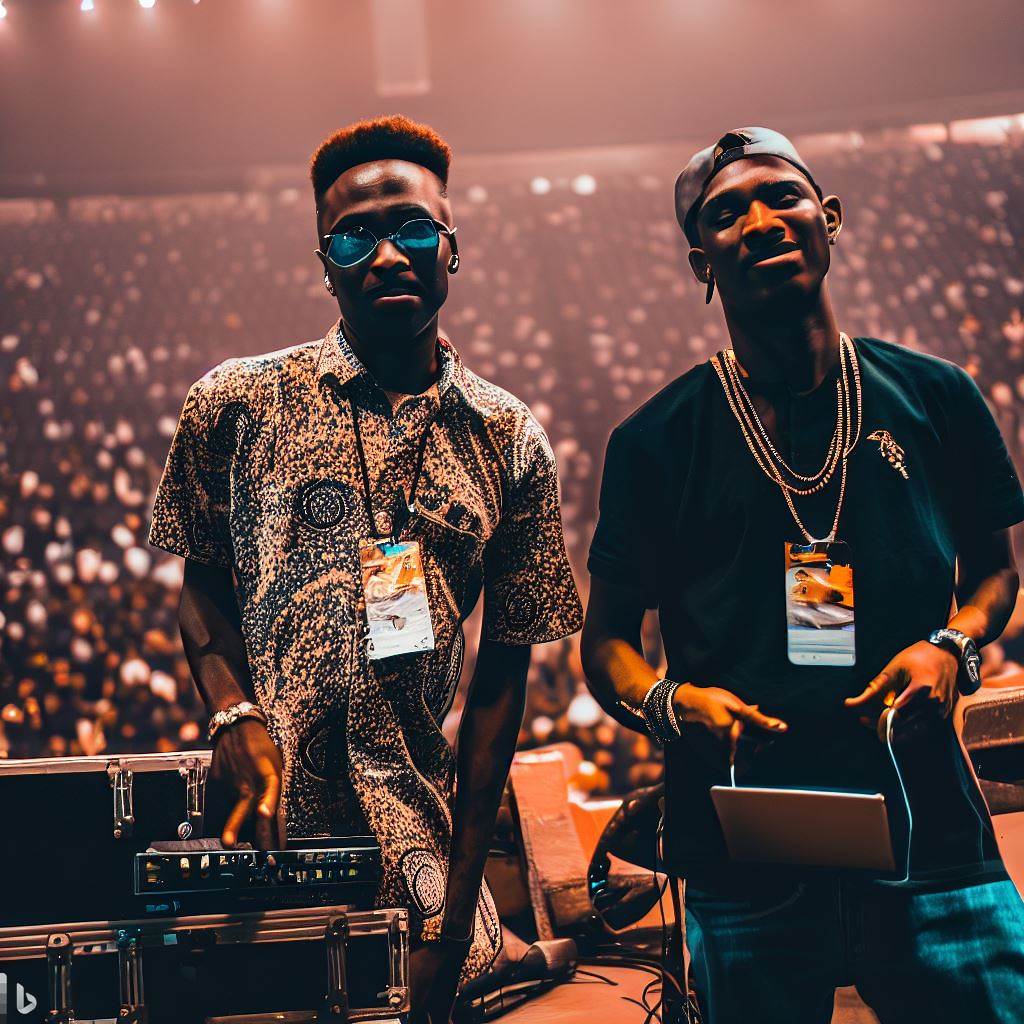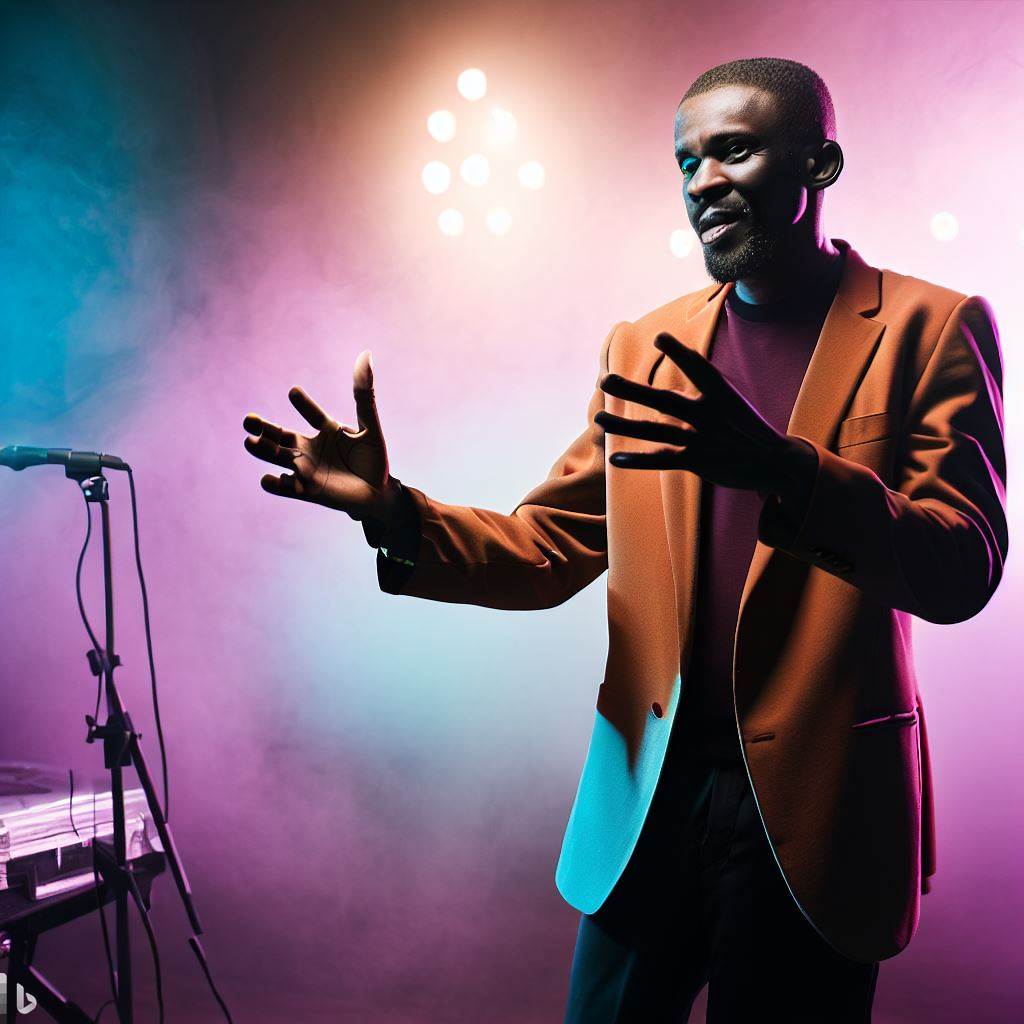Introduction
Brief explanation of Nigerian film industry
Nollywood, the Nigerian film industry, is currently the second largest film industry in the world.
With its vibrant and prolific production, the industry has gained international recognition for its unique storytelling and cultural representation.
One crucial aspect that contributes to the success of Nigerian films is the art of costume design.
Importance of costume design in film narratives
- Costume design plays a crucial role in Nigerian film narratives, enhancing storytelling and character development.
- Costume design in Nigerian films goes beyond simply dressing the characters. It plays a significant role in enhancing the narratives and adding depth to the characters.
- The costumes not only reflect the cultural context but also tell a story in themselves.
- In Nigerian films, costumes are used as a visual language to convey important information about the characters.
- The clothing choices can reveal a character’s social status, occupation, and personality traits.
For example, a rich and powerful character might be dressed in luxurious fabrics and accessories, while a struggling character might be shown wearing worn-out clothes. - These visual cues provide valuable insights into the characters’ lives and help the audience connect with them on a deeper level.
- Furthermore, costume design in Nigerian films helps to establish the time period and setting of the narrative.
- By accurately recreating historical costumes or representing contemporary fashion trends, costume designers transport the audience to a specific era or location.
- This attention to detail adds authenticity to the storytelling and creates a more immersive cinematic experience.
In general, costume design is a vital element in Nigerian film narratives. It not only adds visual appeal but also contributes to character development and storytelling.
The creative choices made by costume designers help shape the overall aesthetic of the films and enhance the audience’s understanding and connection with the characters and settings.
Historical Influences on Nigerian Costume Design
Traditional Nigerian attire
Traditional Nigerian attire has served as the foundation for Nigerian costume design.
- Traditional Nigerian attire plays a significant role in shaping Nigerian costume design. Nigerian costume design has evolved over the years, reflecting the nation’s rich cultural history.
- These attires include the agbada, buba, kaftan, and gele, among others are still widely worn today and hold great cultural significance.
- They are often made from vibrant and richly patterned fabrics such as adire and ankara.
- Traditional Nigerian attires vary across different ethnic groups, showcasing the diverse cultural heritage.
Colonial era and Western influences
- The colonial era brought about significant changes in Nigerian costume design.
- Western influences introduced new styles and clothing materials to Nigerian fashion.
- The adoption of Western clothing marked a shift towards more Westernized fashion trends.
- This period marked a shift towards more Westernized fashion trends, with tailored suits, skirts, and blouses becoming popular among Nigerians.
Fusion of cultures in modern Nigerian costumes
- Modern Nigerian costumes exhibit a fusion of traditional and Western elements.
- Contemporary Nigerian designers borrow design elements from both traditional and Western clothing.
Nigerian designers draw inspiration from both their traditional roots and Western influences to create unique and vibrant designs. - They incorporate traditional motifs, fabrics, and colors into modern silhouettes and designs.
- This fusion creates a unique and vibrant aesthetic that showcases Nigeria’s diverse cultural heritage.
One of the main reasons why costume design is crucial in Nigerian film narratives is its ability to enhance storytelling.
- Costumes help create a visual representation of characters, their personalities, and their social status.
- By carefully selecting costumes, filmmakers can effectively convey important aspects of a character’s identity and role in the narrative.
- For example, the choice of traditional Nigerian attire can signify a character’s cultural background and help establish their roots within the story.
- On the other hand, costumes influenced by Western fashion can indicate a character’s exposure to a more modern and cosmopolitan lifestyle.
- Costume design also plays a significant role in establishing the historical setting of a Nigerian film.
- By accurately representing the attire and fashion of different eras, filmmakers can transport audiences to a specific time period, enhancing the overall authenticity of the narrative.
To summarize, Nigerian costume design reflects the cultural history and influences that have shaped the nation.
Traditional attire, colonial-era fashion, and the fusion of cultures in modern costumes contribute to the rich tapestry of Nigerian film narratives.
By utilizing costumes effectively, filmmakers can enhance storytelling, establish character identities, and create a visually captivating experience for the audience.
Read: Financial Management Tips for Concert Promoters in Nigeria
The Role of Costume in Character Development
Reflecting social status and identity
Costume design plays a crucial role in Nigerian film narratives by reflecting the social status and identity of characters.
- Clothing choices can indicate whether a character is wealthy or poor, powerful or marginalized.
- Costumes can convey the character’s occupation or profession, highlighting their role in society.
- Traditional attire or modern clothing choices can also signify the character’s cultural background and heritage.
Enhancing personality traits of characters
Costumes help to enhance the personality traits of characters, allowing the audience to better understand their motivations and behaviors.
- Bold and elaborate costumes can symbolize a character’s confidence, extroversion, or flamboyant nature.
- Simple and understated costumes may indicate a reserved or introverted character.
- Colors and patterns in costumes can communicate emotions and attitudes, further developing the character’s personality.
Depicting cultural and historical context
Costumes in Nigerian films also serve to depict the cultural and historical context of the narrative.
- Traditional attire showcases the rich cultural heritage of Nigeria, promoting cultural preservation and awareness.
- Historical costumes can transport the audience to specific time periods, accurately representing the era being portrayed.
- Religious or ceremonial costumes can provide insights into specific rituals or traditions that shape the characters’ lives.
All in all, costume design is an integral part of Nigerian film narratives as it contributes to character development.
By reflecting social status and identity, enhancing personality traits, and depicting cultural and historical context, costumes add depth and authenticity to characters and their stories.
Read: The Role of Digital Marketing in Nigeria’s Concert Promotions
Symbolism and Narrative Significance of Costumes
Use of colors and patterns to convey emotions
- Costumes in Nigerian films often utilize vibrant colors and intricate patterns to evoke specific emotions.
- Bright colors like red or yellow can represent passion, love, or energy, while darker tones convey mystery or sadness.
- The choice of patterns, such as floral or geometric designs, can also enhance the narrative by adding depth to characters’ personalities.
- For instance, a character wearing a bold, floral pattern may be seen as outgoing or extroverted, while one dressed in more subdued patterns could be perceived as reserved or introverted.
Instant recognition and portrayal of stereotypes
- Costume design plays a significant role in creating recognizable and memorable characters in Nigerian films.
- By utilizing specific clothing styles or accessories associated with particular professions, characters can be instantly identified by the audience.
- For example, a doctor’s white coat or a lawyer’s traditional wig and gown instantly convey their respective roles without the need for explicit exposition.
- Costumes can also reinforce stereotypes, which can either support or challenge societal expectations.
Shaping the audience’s perception of characters and story
- Costumes act as visual cues that shape the audience’s understanding and interpretation of characters and their roles within the narrative.
- A character dressed in royal or regal attire will be perceived as powerful, authoritative, or important.
- On the other hand, a character donning tattered or worn-out clothing might evoke sympathy or suggest a lower social status.
- Costumes can also reflect character arcs and development throughout the film, visually representing changes in their personality or circumstances.
Read: How to Secure Sponsorships as a Concert Promoter in Nigeria
Costume Design as a Storytelling Tool
Establishing time and place
Costume design plays a crucial role in setting the time and place of a film narrative. Through careful attention to period-specific clothing and accessories, filmmakers can transport audiences to a specific era or location.
Conveying character relationships and narratives
Costumes can reflect the dynamics between characters and communicate their roles within the story.
For example, a businessman in a tailored suit may represent power and authority, while a character in casual attire may signify a laid-back and approachable personality.
Evoking audience empathy and emotional connection
By dressing characters in relatable and authentic costumes, filmmakers can create a sense of empathy and emotional connection between the audience and the characters.
When viewers see characters wearing clothes they can identify with, it enhances their ability to connect with and understand the character’s experiences.
Highlighting character transformations and arcs
Costume design can signify character transformations and growth throughout a film’s narrative.
As characters evolve, their costumes can change to reflect their new identities or altered states of mind, reinforcing their character arcs and the story’s overall themes.
Enhancing visual storytelling
Costume design is an essential tool for enhancing the visual storytelling of a film.
It aids in defining characters and their relationships, creates a cohesive visual aesthetic, and adds depth to the overall storytelling experience.
Symbolism and metaphor
Costumes can be used to convey symbolism and metaphors within a film.
For example, a character wearing a white dress in a horror film may represent innocence or vulnerability, while a character in dark and mysterious attire could symbolize danger or deception.
Creating cultural authenticity
In Nigerian films, costume design plays a pivotal role in capturing the cultural essence and authenticity of the narrative.
It helps create a realistic portrayal of Nigerian traditions, beliefs, and societal norms, allowing audiences to connect with their own cultural heritage.
Establishing character personas
The costumes worn by characters can establish their personas and provide insights into their personalities.
An extravagant and flamboyant outfit may suggest a bold and outgoing character, while simpler attire can indicate a more reserved or modest persona.
Reinforcing the film’s themes
Costume design can reinforce the themes and motifs present in a film.
Colors, fabrics, and specific costume choices can subtly or overtly support and underscore the film’s underlying messages, enhancing the audience’s understanding and engagement.
Signifying social status and power dynamics
Through costume design, filmmakers can highlight social hierarchies and power dynamics within a film narrative.
Distinctive clothing styles and accessories can denote wealth, influence, or subordination, helping to establish the characters’ social positions.
In short, costume design is a powerful storytelling tool in Nigerian films. It establishes time and place, conveys character relationships, evokes empathy, and enhances visual storytelling.
It creates cultural authenticity, reinforces themes, and signifies social status and power dynamics.
Through the careful curation of costumes, filmmakers can engage audiences on multiple levels, enriching the narrative experience and contributing to the overall success of the film.
Read: Risk Management for Concert Promoters in the Nigerian Scene

Collaborative Process of Costume Design in Nigerian Films
In the Nigerian film industry, known as Nollywood, costume design plays a vital role in enhancing the storytelling and creating an immersive experience for the audience.
The collaborative process between costume designers, directors, and actors ensures that the costumes effectively contribute to the overall narrative.
Involvement of Costume Designers, Directors, and Actors
- In Nigerian films, costume designers work closely with directors and actors to bring the characters to life through their wardrobe.
- This collaboration begins during the pre-production phase, where the costume designer meets with the director to understand the vision for each character.
- Once the vision is established, costume designers engage in extensive discussions with the actors to understand their interpretation of the character and their input on the costumes.
- This collaboration allows the costume designer to incorporate the actor’s ideas and preferences while staying true to the director’s vision.
Research and Cultural Consultations for Authenticity
- To ensure authenticity, Nigerian costume designers undertake thorough research and cultural consultations.
- They study the historical and cultural context of the film’s setting, the characters’ backgrounds, and even specific time periods if necessary.
- Cultural consultations with experts, historians, and members of the local communities provide valuable insights into traditional attire, symbols, and meanings associated with certain garments.
- This research helps costume designers accurately represent the characters’ identities and cultural heritage.
Balancing Artistic Vision with Practical Considerations
- While artistic vision is important, practical considerations cannot be overlooked in the collaborative process of costume design.
- Costume designers must work within the film’s budget and timeline constraints.
- They also take into account factors such as weather conditions, ease of movement for actors, and the practicality of maintaining and cleaning the costumes during the demanding shooting schedules.
- Balancing these practical considerations with the artistic vision ensures that the costumes not only look visually appealing but also serve the practical needs of the production.
- Additionally, costume designers collaborate with other departments involved in the production, such as the set design and makeup teams.
- This collaboration ensures that the costumes seamlessly blend with the overall visual aesthetic of the film.
In a nutshell, the collaborative process of costume design in Nigerian films involves the active involvement of costume designers, directors, and actors.
Through research, cultural consultations, and a balance between artistic vision and practical considerations, the costumes effectively contribute to the authenticity and narrative of the film.
Read: Success Stories of Top Concert Promoters in Nigeria
Examples of Nigerian Films where Costume Design Contributes to Narratives
Costume design in these Nigerian films goes beyond superficial aesthetics, as it is intricately woven into the narratives. The costumes help develop the characters, portray cultural values, and enhance visual storytelling.
“The Wedding Party”
- “The Wedding Party,” a popular Nigerian film, utilizes costume design to emphasize the cultural diversity and social status of characters.
- The film showcases extravagant traditional Nigerian wedding costumes, highlighting the importance of marriage in Nigerian society.
- The vibrant and elaborate attire adds richness to the narrative and enhances the visual experience for the audience.
- In “The Wedding Party,” the extravagant and detailed wedding costumes act as a visual representation of the cultural significance of marriage.
- They serve as a reflection of familial values, showcases traditions, and provides insight into the characters’ backgrounds.
“Half of a Yellow Sun”
- In the film “Half of a Yellow Sun,” set during the Nigerian Civil War, costume design plays a vital role in depicting the socio-political climate of the time.
- The characters’ clothing reflects their social positions and allegiances.
- The contrast between the traditional Nigerian attire and the outfits worn by English characters symbolizes the clash of cultures and the colonial influence on Nigerian society.
- In “Half of a Yellow Sun,” the costumes serve to differentiate characters based on their social status and political affiliations.
- The traditional Nigerian attire worn by some characters reflects their connection to their cultural heritage, while the attire of English characters highlights the colonial influence on Nigeria.
“October 1”
- “October 1,” a psychological thriller set in 1960s Nigeria, effectively employs costume design to create an authentic atmosphere.
- The film portrays the struggle for independence, and the costumes accurately depict the clothing trends of the time.
- The use of traditional Nigerian outfits, colonial-era attire, and police uniforms helps anchor the narrative within its historical context and contributes to audience immersion.
- In “October 1,” costume design aids in establishing the film’s time period and setting. The clothing choices transport the audience to 1960s Nigeria, setting the stage for the nation’s struggle for independence.
- The attention to detail and historical accuracy in the costumes enhance the overall cinematic experience.
Costume design contributes to the overall narrative in these Nigerian films by helping to establish the cultural context, differentiate characters, and create emotional connections.
The costumes become an essential tool in storytelling, as they communicate important information about the characters and their environments.
In essence, costume design in Nigerian films like “The Wedding Party,” “Half of a Yellow Sun,” and “October 1” plays a significant role in enhancing the narrative experience.
The attention to detail in costume choices helps transport the audience into the story’s world, establish the cultural context, and develop the characters.
By understanding the importance of costume design, one can gain a deeper appreciation for the artistry involved in Nigerian filmmaking.
Read: Influence of Nigerian Textiles in Costume Design
Challenges and Innovations in Nigerian Costume Design
Limited budget constraints
- Nigerian costume designers often face the challenge of working with limited financial resources.
- This constraint can restrict their choices in terms of fabrics, accessories, and overall design.
- However, these limitations have encouraged designers to think creatively and find innovative solutions.
- Despite the budget constraints, Nigerian costume designers still manage to create stunning and authentic designs.
Use of recycled materials and creativity
- In order to overcome budget constraints, Nigerian costume designers often repurpose and recycle materials.
- This not only helps in reducing costs but also promotes sustainability in the film industry.
- Designers use their creativity to transform everyday objects into unique and visually appealing costumes.
- These recycled materials add an extra layer of authenticity and cultural significance to the film narratives.
Harnessing technology for visual effects
- Nigerian costume designers are embracing technology to enhance the visual effects of their designs.
- With advancements in digital printing and 3D modeling, costumes can be more intricate and realistic.
- Technology allows designers to create costumes with complex patterns and textures that were previously difficult to achieve.
- This integration of technology with costume design enhances the overall narrative and visual experience for the audience.
In summary, Nigerian costume designers face challenges due to limited budgets, but they consistently find innovative solutions.
They repurpose and recycle materials, showcasing their creativity and promoting sustainability. Additionally, they harness technology to enhance visual effects, pushing the boundaries of design possibilities.
Despite the challenges, Nigerian costume design continues to contribute significantly to Nigerian film narratives.
Read: How to Navigate Legal Issues as a Concert Promoter in Nigeria
Conclusion
Recap of the importance of costume design in Nigerian film narratives
Costume design plays a crucial role in enhancing Nigerian film narratives by visually capturing cultural elements and character traits.
Appreciation for the creativity and storytelling power of costume designers
The creativity and storytelling power of costume designers deserve appreciation for their contribution to the overall cinematic experience.
Encouragement to explore and support Nigerian films and their costume design
It is essential to explore and support Nigerian films to further promote and encourage the growth of costume design in the industry.




